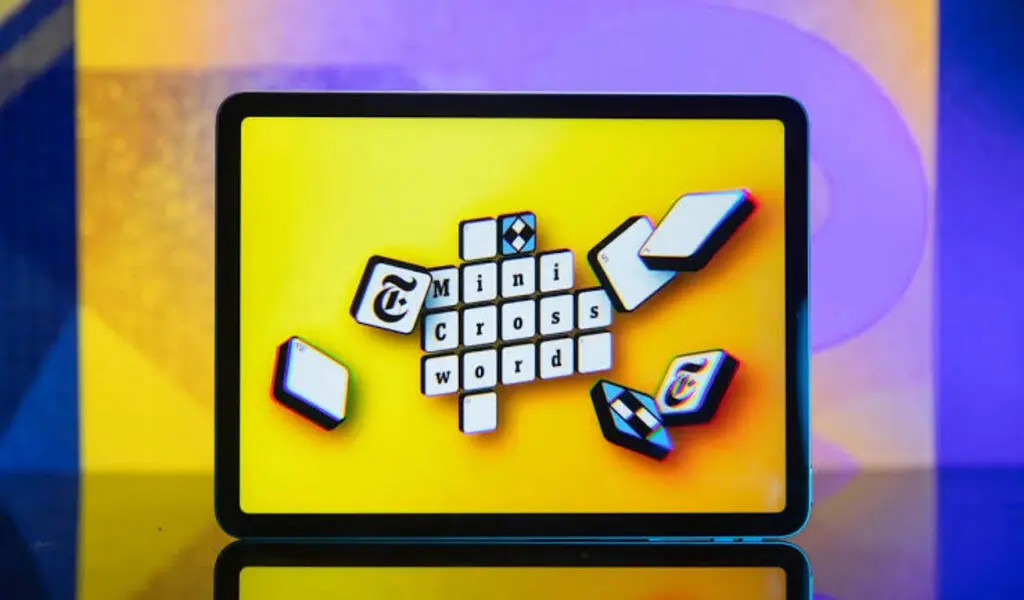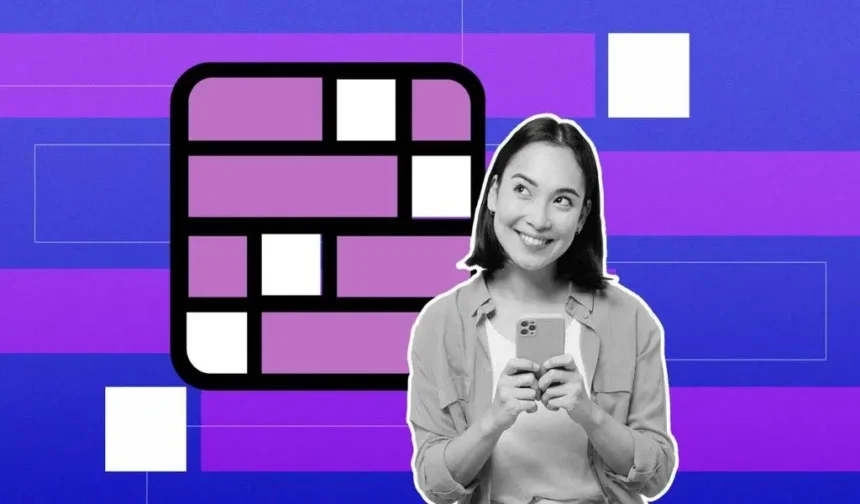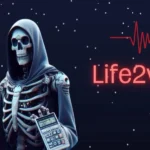There’s no age limit to the daily puzzle published by the New York Times. Our Connections Hint Mashable puzzle offers intriguing challenges to puzzle lovers worldwide.
Unlike traditional crosswords or word searches, Connections hint mashable provides players with 16 seemingly unrelated words and challenges them to categorize them into four categories.
The daily puzzle has won a dedicated following, inspiring websites like Mashable to provide hints and assist players in their quest without giving away too much information.
A mashable for the puzzle of the NYT is presented in this article, which provides connection hints.
We’ll get started now.
A description of the NYT’s connections hint Mashable

Every day, Connections hint mashable players are presented with 16 words to solve. The game requires lateral thinking and pattern recognition. In order to accomplish this goal, we need to organize the words into four groups of four so that each group has a common thread.
There are several ways in which these associations can be made, from straightforward categories such as “colors” or “fruits” to more abstract associations such as “words associated with time” or “things that can be broken.”
It can be challenging to discern these connections due to their subtlety. Some groupings are clearly noticeable, whereas others require more contemplation and a broader understanding of language and concepts. Through a combination of simplicity and complexity, Connections is accessible to new players and continually engaging for experienced players.
The role of Mashable in enhancing connections hint mashable
The Daily Hint initiative was developed by Mashable to assist players of Connections hint mashable, which is gaining popularity.
Players will find that these hints will aid them in solving the puzzle without giving away the solution, which preserves the puzzle’s integrity and their sense of accomplishment.
As an example, Mashable provided the following thematic nudges on April 22, 2025:
-
Yellow: To cut the long story short
-
Green: Supplies for artistic endeavors
-
Blue: The color blue refers to slippery objects
-
Purple: Known to produce heat naturally
With yellow being the easiest and purple being the most challenging, these hints correspond to the puzzle’s difficulty level. As a result of aligning their hints with this system, Mashable ensures that players receive assistance proportional to each category’s difficulty level.
Finding Hints: The Psychology of It
A person’s brain thrives on problem-solving and the satisfaction that comes from overcoming challenges. However, prolonged frustration can take away the joy of problem-solving.
It’s important to remember that Mashable’s hints are meant to be a middle ground, offering just enough information to trigger a player’s lateral thinking without compromising the puzzle’s difficulty.
It acknowledges the player’s desire to be challenged and respects their intellect. It acknowledges that even if some may look for a nudge in the right direction, they will still desire to reach their own decision.
The rise of collaborative problem-solving through community engagement
It is not just individual play in Connections hint mashable that fosters a sense of community; online forums, social media groups, and comment sections are abuzz with discussions about daily puzzles, strategies, and interpretations of Mashable’s hints. As a result of this collaborative environment, players can enjoy an enhanced gaming experience and connect with other gamers with similar interests.
Mashable plays an important role in this community by providing a platform for hints and discussions. By providing a platform for discussions and ideas, Mashable contributes to the development of this community.
As a result of this sense of camaraderie, Connections is transformed from a solitary activity into one shared by the entire group.
Connections hint mashable are educationally valuable.
As well as being entertaining, Connections provides significant educational benefits. It strengthens vocabulary, encourages critical thinking, and captures patterns. During the game, the players often discover and explore new words, concepts, and associations, thus broadening their linguistic and cognitive capabilities.
Through the hints, Mashable encourages players to think differently and consider alternative perspectives, thus enhancing this educational aspect. Instead of providing direct answers, they encourage players to make connections they might not have made before and to go deeper into their understanding.
Word Games in the Digital Age: Adapting to the Digital Age
It is clear from the success of Connections and the supportive role platforms like Mashable play that word games have evolved in the digital world. Traditionally interesting puzzles are being adapted online to reach broader audiences and incorporate more interactive elements to create a more engaging experience.
With digital platforms, users can get immediate feedback, receive daily updates, and interact with communities. Print versions have limited or absent features like those. In this way, word games have remained relevant to a younger, tech-savvy generation while being able to appeal to a wider range of audiences.
A Guide to Long-Term Success: Mastering the Art of Connections
Connections continually sharpen cognitive skills over time, which is one of the reasons it has become a daily habit for so many players. Developing a successful approach requires both patience and strategy. While Mashable hints can be helpful, players who wish to improve their performance can follow specific techniques to succeed.
Identifying category clusters is essential. This means grouping words with obvious connections first. For example, if you see the words “red,” “blue,” “green,” and “yellow,” it would be safe to suspect a category based on color. When players approach the more obvious themes early, they reduce the number of possible groupings for the more difficult ones.
Additionally, connecting words to multiple categories can throw players off, and the creators of Connections often insert words that could fit logically into multiple categories. Mashable’s hints excel in this regard—by providing thematic nudges, they help solvers maintain focus and filter out red herrings.
The last step is to keep track of progress and to review previous puzzles. Veteran solvers collect notes and journals that mark recurring themes. Since puzzles often revisit similar subjects, such as animals, emotions, instruments, or puns, familiarity with past answers increases intuition.
An Expert-to-Casual Solver Bridge: Mashable’s Hints
With Mashable, you get short, thematic hints that never spoil your solution. Mashable’s contribution to the puzzle community is its accessibility. A wide range of audiences will enjoy this, from casual puzzle solvers needing a nudge over coffee to hardcore solvers who are forced to analyze all clues in depth.
Getting involved with Mashable doesn’t have to be an intimidating experience for players. Mashable’s approach to puzzle forums can seem overwhelming due to intense discussions, but it’s friendly, straightforward, and always centered around readers. The puzzle-solving process is maintained while it provides just enough insight to spark an interest.
There is typically a little commentary accompanying each day’s hint, such as an observation about the level of difficulty or a creative wordplay. As a result, the hints have a higher level of personality and depth, making them feel more like advice from a fellow player rather than a faceless directive.
Is there anything unique about Connections?
The brain is tapped into a very different area of the brain when playing Connections compared to other types of word games such as crosswords, Wordle, and spelling bees.
Definitions and spelling aren’t the only things you need to know. Conceptual grouping, nuance, and even humor are also important. In a category like “things that are soft,” there might be “clouds,” “pillows,” “cotton,” and, unexpectedly, “marshmallows.” These clever associations delight.
New York Times Games, which curates smart and occasionally cheeky puzzles, frequently plays with language unexpectedly. Some general trivia knowledge is also tested through Connections, along with cultural awareness, popular idioms, and a little vocabulary.
There might be a puzzle about Shakespearean characters one day, and another about internet slang or comic book characters the next.
The hints provided by Mashable keep pace with shifts in tone and subject matter. Their editors capture the spirit of the puzzles, ensuring the hints feel current and relevant.
In particular, this is useful when the puzzle is themed around contemporary culture – an issue which newer solvers or international players might not easily recognize.
A Daily Ritual: Resetting the Mind through Connections
The act of solving Connections is more than just an activity for many; it’s a ritual that helps them start the day, reset their brains during a lunch break, or unwind at night.
It mimics a mini brain workout with its four-tier structure — yellow through purple. Solvers can work at their own pace, starting with the easy questions and gradually working toward the most challenging.
The daily rhythm is supported by Mashable’s timely posting of hints. Their morning updates fit neatly into a solver’s daily schedule. Players know Mashable is there not only for shortcuts but also for added perspective, whether on their morning commute or at home.
In addition, this ritualistic nature has formed the basis for Connections, which has also become a bonding activity. Couples, roommates, families, and coworkers have all taken part, sharing theories and working together. When the team cannot decide what to group themselves into, Mashable hints often act as the neutral tiebreaker or the extra voice that helps them decide.
The Mashable Experience: Going Beyond the Puzzle
With the regular updates, archives of past puzzles, articles about video game strategies, and comment sections that are open to discussion, Mashable has turned a simple assistance feature into a mini-community.
It’s also possible to see previous hints, allowing readers to see how certain categories have changed over the years or how wordplay has been applied differently every day.
Users can use this to improve their long-term game and spot patterns they may have missed. Mashable editors also include post-puzzle analyses explaining what made that day’s connections so hard or fun.
As a result, NYT puzzle fans now have a centralized place to get their NYT puzzle news. Their coverage has even spilled into games like Wordle, Spelling Bee, and Strands. Having this ecosystem strengthens user engagement, increasing the number of casual players who return daily to solve the puzzles and engage with the community.
Hints for solving puzzles and digital games
With the evolution of digital puzzles, platforms like Mashable are increasingly important. Players are no longer looking for static answers; they want layered, nuanced support that allows them to gain proficiency. It is likely that Mashable’s model—respecting challenges, rewarding curiosity—will become the standard.
The experience might even become more interactive. Imagine Mashable integrating hints directly into an app so users can receive a gentle nudge, vote for the hardest puzzles, or compare their solving times to the average.
As long as the right tools are used, this experience can become gamified. The accessibility of the game will also remain a top priority. For example, visual clues or audio cues may interest visually impaired players.
It may be necessary to explain slang or idioms in a simplified manner for non-native English speakers. Mashable’s hinting system has the potential to be expanded to accommodate more learners and thinkers.
Putting Puzzles and Platforms Together: A Symbiotic Relationship
In the interaction between Connections and Mashable, we see a harmonious relationship between content creators and platforms that support them. As the New York Times delivers an intriguing daily challenge, Mashable enhances the experience with thoughtful hints, fosters community engagement, and promotes the educational benefit of the challenge.
The synergy of this process ensures that players are continually challenged, supported, and connected, embodying the essence of Connections hint mashable. In the future of interactive learning and entertainment, such collaborations will play an increasingly important role in digital word games. Bottom of Form
More info: Life2vec AI Crypto Coin: Getting to Know Its Cause and Effects








